Hurricane Ian Florida Impacts Forecast for September 27th
Hurricane Ian will make landfall on Wednesday. These are the surge, wind, rain, and tornado impacts Florida can expect, region-by-region.
This post may be freely shared.
All subscribers will have access to tomorrow’s live blog, providing real-time analysis of Hurricane Ian’s landfall, times to be announced.
A morning briefing covering key overnight developments and forecast changes for paid subscribers only will continue for the duration of Ian’s threat. Please consider a paid subscription to support the Hurricane Watch and get all of our (literally) round-the-clock coverage of Ian’s impacts on Florida.
Unfortunately, due to technical difficulties, Facebook did not archive tonight’s live video.
Hurricane Ian has entered the Gulf of Mexico as a major hurricane, and is on a collision course with the Florida Gulf Coast between Tampa Bay and the Fort Myers area Wednesday afternoon or early Thursday. Ian will likely bring catastrophic wind and surge damage to Southwest Florida, as well as broad and severe flooding rainfall impacts to much of the Florida peninsula through Friday.
As of the NHC’s 2 p.m. advisory, the center of Hurricane Ian has emerged from the north coast of Cuba and is located about 300 miles south of Tampa. Ian reached its westward apogee over Cuba, and is now moving east of due north at about 10 mph. Ian’s movement through Tuesday afternoon as tracked by Hurricane Hunter aircraft and Key West radar has nicked east of the NHC forecast track and most model guidance, as shown below. The NHC official forecast has adjusted south and east since Monday, and now calls for landfall between Tampa Bay and Charlotte Harbor Wednesday evening; further shifts south and east may be incoming.
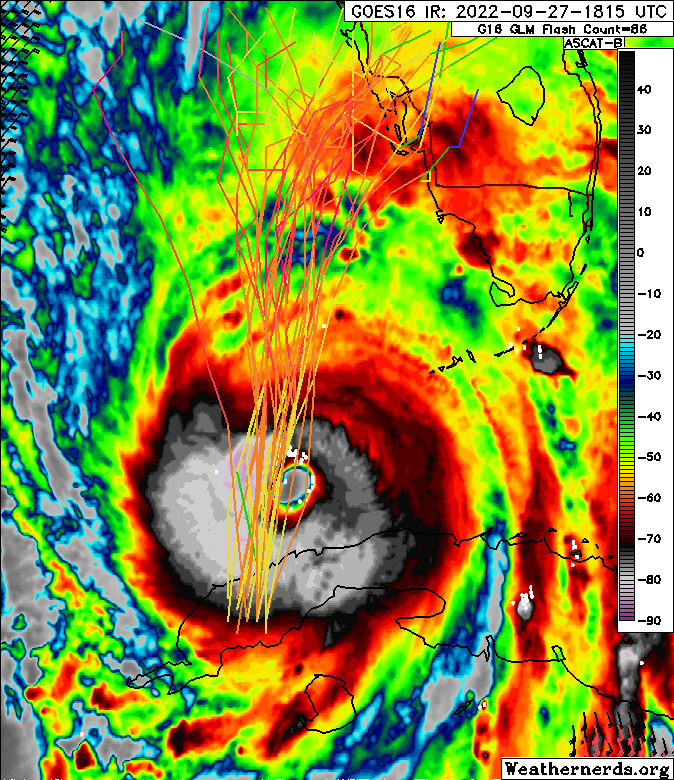
Maximum sustained winds are 120 mph for the moment and will likely continue rising into early Wednesday. A clear, perfectly symmetrical eye on satellite imagery and ongoing bursts of eyewall lightning are indicative that the NHC forecast for Category 4 intensity is likely to verify overnight.
Ian’s eastward shift narrows the possibilities for the hurricane. Realistic scenarios now range from a landfall Wednesday afternoon in the Fort Myers vicinity, to a crawl near the Tampa Bay region into Thursday morning. Should Ian’s center technically remain over water, it would likely be close enough to the coast that impacts on the Florida West Coast would be similar to (or worse) than a landfall.
After Ian moves north-northeast towards the coast on Wednesday, the departure of eastern U.S. steering trough means it probably will decelerate and turn back north over Central Florida or scraping the Nature Coast on Thursday, and likely not clear out of Florida until early Saturday.
The anticipated landfall on Wednesday is the worst-case scenario for Southwest Florida. Ian’s maximum winds will probably crest overnight due to increasing shear, but meaningful disruption of the hurricane is unlikely before landfall; even if maximum winds edge downward a tick from the peak before coming ashore, as in the NHC forecast, in no way should that be construed as Ian “weakening.” Ian will strike as a major hurricane, the fifth Category 3 or higher (and just 12th hurricane overall) to make a direct landfall between Hernando County and Fort Myers since 1851.
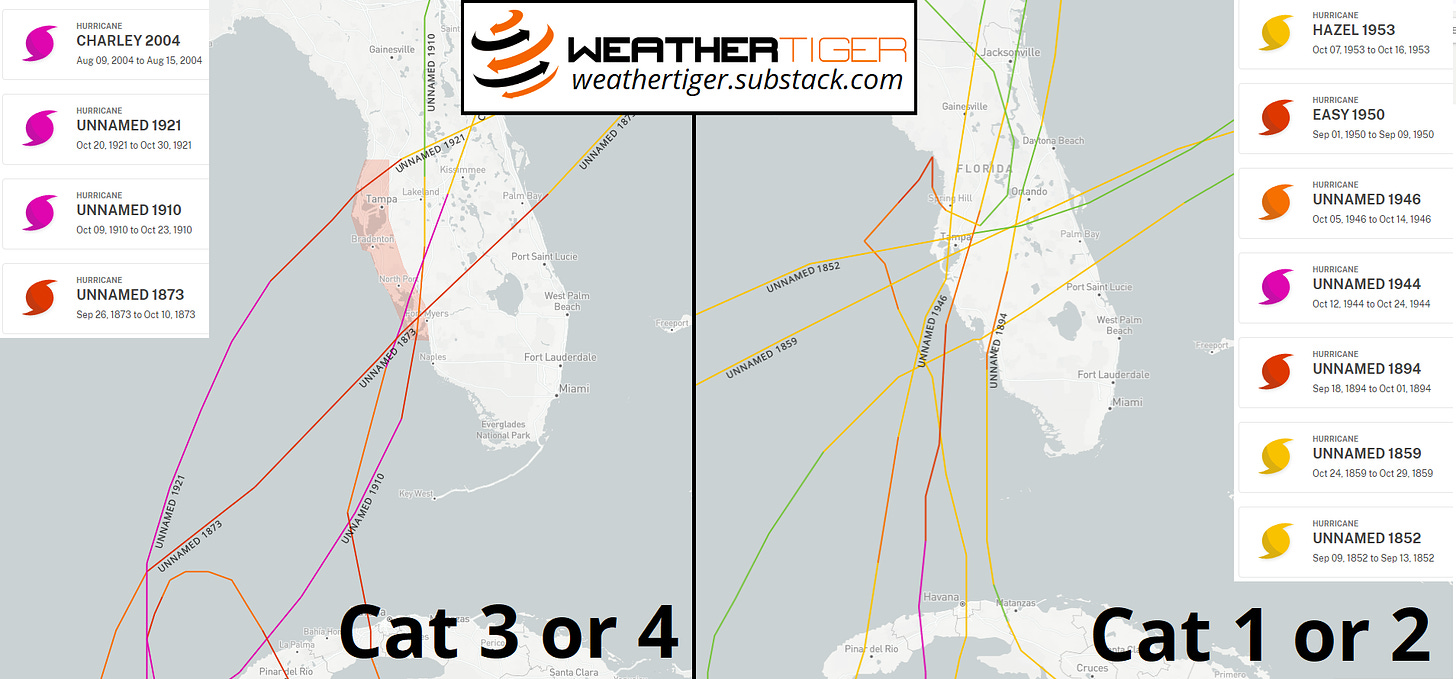
That means there are a lot of communities that are going to be tested by all four hurricane hazards—surge, wind, rain, and tornadoes—who have no modern reference point for such an event. Hurricane Charley was a compact Category 4 sucker punch into Charlotte Harbor in 2004, causing a narrow swath of catastrophic wind damage extending into Central Florida. However, Charley’s tiny size and forward speed of 20-25 mph heightened its wind impacts relative to other hazards. Ian’s larger size and expected forward speed of around 5 mph on Thursday and Friday make for widespread water hazards across the state not observed during Charley.
Let’s go one-by-one through each of those hazards to get a full picture of the threat Ian poses to Florida:
Storm Surge
Ian will be a surge event unlike any hurricane in the modern era for Southwest Florida. The powerful windfield in Ian’s eastern semicircle will push a wall of water north onto the shallow Gulf continental shelf; any last-minute miniscule reduction in Ian’s maximum winds will not reduce the volume of that onslaught one bit.
As such, Storm Surge Warnings are in place for essentially all of Florida’s Gulf Coast. NHC modeling is calling for 8-12’ of surge between southern Tampa Bay and Bonita Beach, with 5-8’ values further south and east. This is life-threatening surge without living precedent in Southwest Florida: if you are told to evacuate, leave. You can hide from the wind, but you need to run from water. Surge projections south of Bonita may also rise further if the track ticks south; refer to the latest NHC inundation forecast.
The most severe coastal flooding will occur near and southeast of where Ian’s center comes ashore, with much lesser inundations north and west of the eventual landfall point. If Ian does indeed make landfall south of Tampa Bay, the primarily offshore winds in Tampa would limit surge (but not freshwater or flash!) flooding. That would be one silver lining of a track further east, though a path over or just west of the Bay that would put Tampa right back in the thick of catastrophic flooding remains a possibility. The surge threat to the Nature Coast and Apalachee Bay has diminished with the shift east, but should still be monitored.
Finally, northeast Florida including Jacksonville can expect 3-6’ of surge from strong onshore winds, particularly Thursday. This area is also under a Storm Surge Warning.
Wind
A landfall or track along the coast amplifies the expected wind damage from Ian along the Florida Gulf Coast. With Ian expected to make landfall as a Category 3 on Wednesday thus not be weakening, hurricane-force winds are expected along the coast as far south as Naples, and north to the Tampa Bay area. It is too early to know which sections of the Tampa to Fort Myers areas’ coastlines will receive Ian’s eyewall, where structurally damaging wind gusts exceeding 115 mph will be concentrated. With forward motion slowing and turning north Wednesday night into Thursday, Ian’s eyewall could scrape an extended section of this coastline.
Hurricane-force wind gusts are also likely inland over Southwest Florida and potentially west Central Florida at the height of the storm, and an extended period of tropical-storm-force winds and gusts are expected in these areas through Thursday. Due to Ian’s slow motion, East Central Florida is not likely to see a blast of hurricane-force winds as in Charley, but tropical-storm-force wind gusts in squalls are expected late Wednesday into Thursday. North Central and Northeast Florida will also likely see tropical-storm-force onshore winds, particularly on Thursday and possibly extending into Friday. Occasional tropical-storm-force wind gusts are possible in bands in the Big Bend and eastern Panhandle Thursday and Friday, but nothing worse unless the track of Ian changes.
Rainfall
When people think of hurricane threats, excessive rainfall and flooding isn’t necessarily the first thing that comes to mind. But it should be—nearly one-third of tropical cyclone-related casualties are caused by freshwater flooding.
Heavy rainfall is going to be the most widespread impact from Ian. Two to five inches of rain have already fallen from outer bands in South Florida as of Tuesday afternoon, and steady, soaking rainfall with intermittent torrential downpours will continue through Ian’s excruciating 48-to-72-hour trek across the state. Current guidance calls for general 6-12” storm rainfall totals across the entire Florida peninsula, with 10-20” totals expected in west-central Florida. This will cause elevated flash flooding potential across the peninsula through Friday.
Look for rains to be heaviest through Wednesday in South Florida, on Wednesday and Thursday in Central Florida, and Thursday and Friday in North Florida. Rainfall totals will diminish quickly heading west into the Panhandle, but some locally heavy rainfall is possible in the Big Bend and even the eastern Panhandle Thursday and Friday, depending on Ian’s exact track.
Tornadoes
Tornadic activity is common in landfalling hurricanes, mostly in bands north and east of the circulation center. South Florida has seen Tornado Watches through Tuesday, and the possibility of tornadic cells within outer bands will continue through Thursday in South Florida and Central Florida.
It’s hard to find much of a cause for optimism. Ian will be a long-lasting, four-quadrant threat that will probably combine the extreme surge and destructive wind impacts of a major hurricane landfall with an extended tail of high winds and elevated freshwater and flash flood potential. These projected impacts may well continue to shift in coming days, and all Floridians should be closely monitoring the latest information from the National Hurricane Center, your local National Weather Service office, and emergency management. I will continue to cover Ian blow-by-blow until all threats finally ease.
Good luck, Florida. We’ll need it. Keep watching the skies.




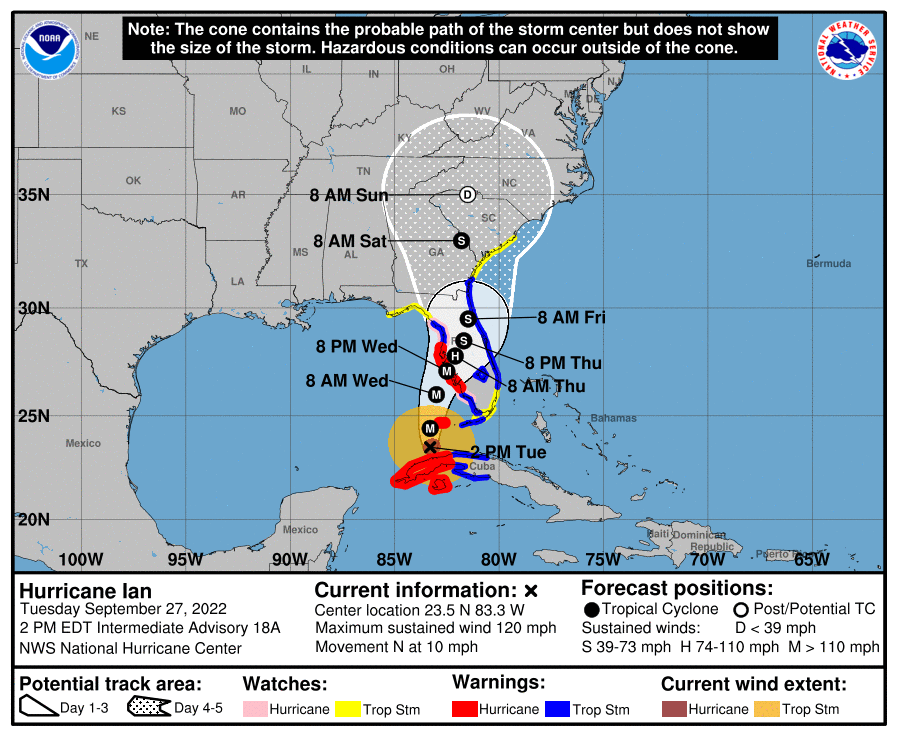
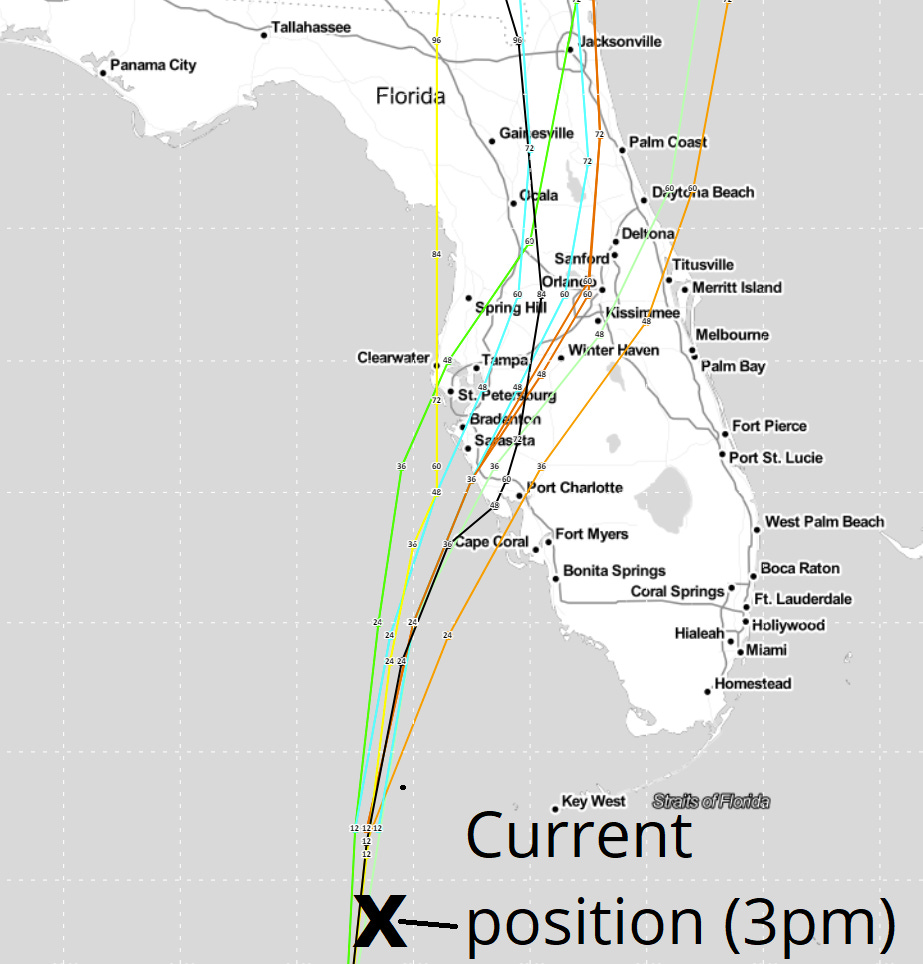
![[Image of cumulative wind history] [Image of cumulative wind history]](https://substackcdn.com/image/fetch/w_1456,c_limit,f_auto,q_auto:good,fl_progressive:steep/https%3A%2F%2Fbucketeer-e05bbc84-baa3-437e-9518-adb32be77984.s3.amazonaws.com%2Fpublic%2Fimages%2Fc78b735b-e504-4b72-9d73-5970c244efdc_897x736.png)
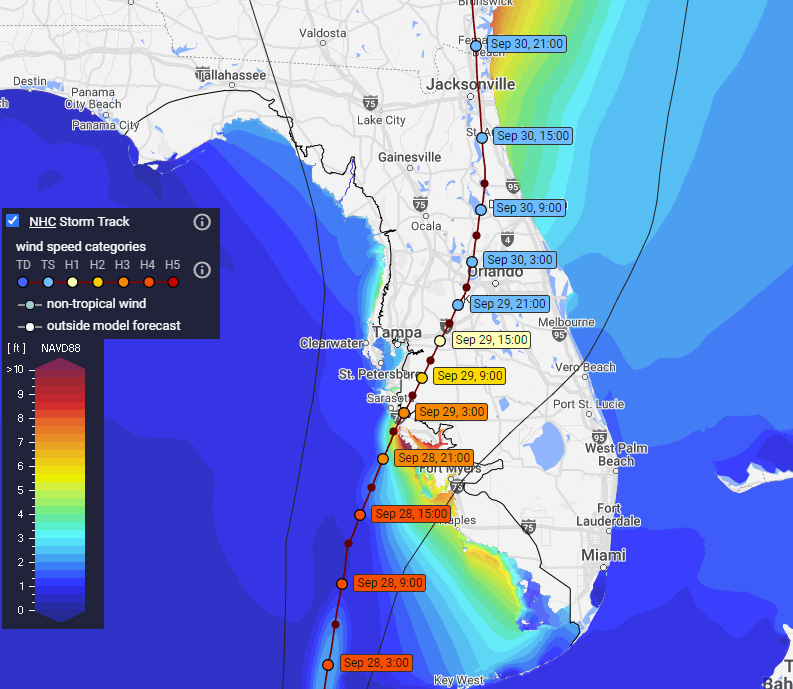
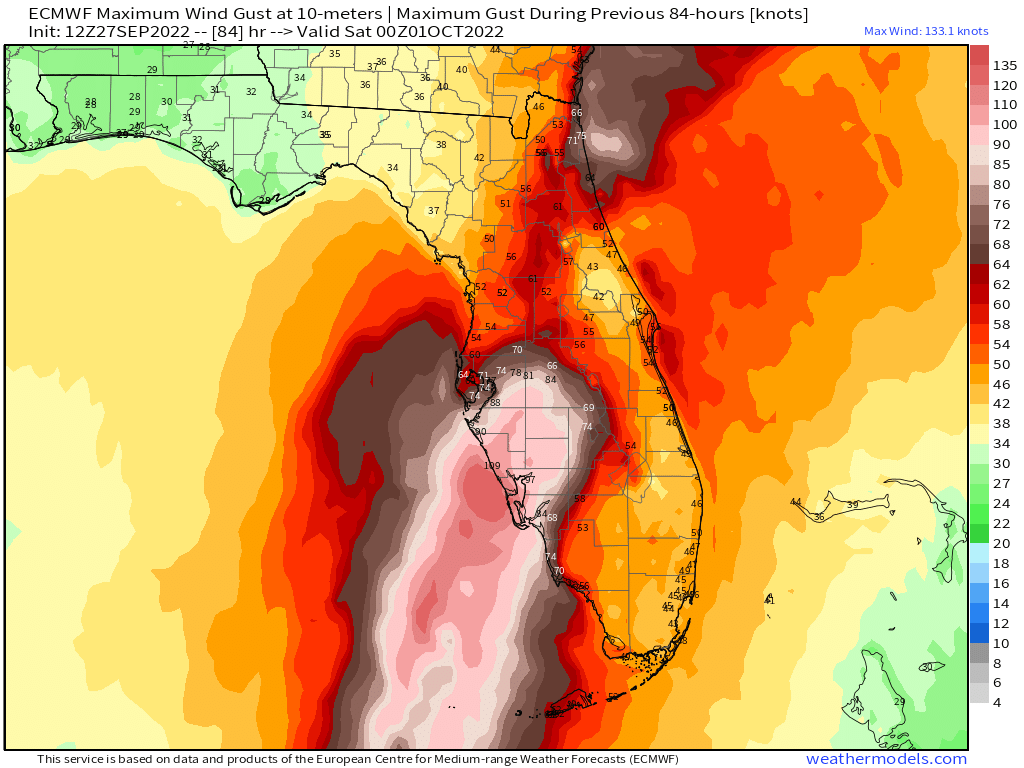
![[Image of WPC QPF U.S. rainfall potential] [Image of WPC QPF U.S. rainfall potential]](https://substackcdn.com/image/fetch/w_1456,c_limit,f_auto,q_auto:good,fl_lossy/https%3A%2F%2Fbucketeer-e05bbc84-baa3-437e-9518-adb32be77984.s3.amazonaws.com%2Fpublic%2Fimages%2F71ca6af6-6219-4967-9fdc-9baf2e74b1c2_892x716.gif)
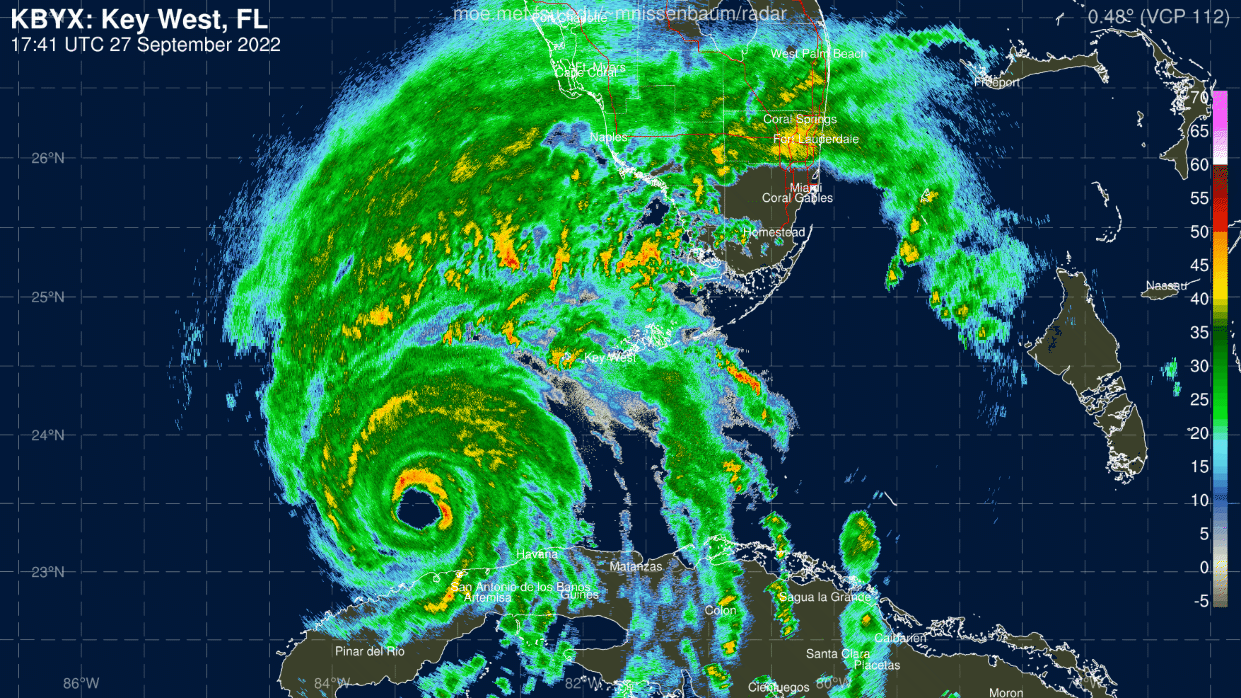
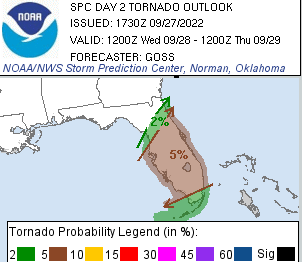
Damn, bro
You tell it like it is…and it is a brutal beast!
I love your in depth detailed reporting and your writing feels so right on it!!!